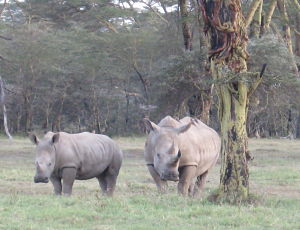The 66 page report involving Kenya’s orphaned cheetah cubs was released a couple of weeks ago.
It exposes allegations against the Kenya Wildlife Service and several individuals. It brings Kenya’s illegal pet trade to the forefront, and provides damaging information proving that the Nairobi National Park Animal orphanage is unfit for animals.

Two cheetah cubs in their enclosure photo via Sybelle Foxcroft
Then just a few days ago an upscale Nairobi hotel hired a cheetah from said orphanage for an event. Needless to say when the photo of the cheetah in front of the property was published, public outrage ensued. Consequently the photo vanished from the hotel’s face book page. The photo is posted on my face book page.
But the damage was done.
The Tribe hotel was on my “to stay” list and one property that I felt would be a great option for clients, but not now.
I have written much about the good that the Kenya Wildlife Service does as custodians of Kenya’s precious wildlife, but lately what is going on? How can they permit the hiring of wildlife for birthday parties and events?
Just today the KWS director was to meet with Maasai Morans regarding the increasing human/wildlife conflict, specifically lion killings. But he didn’t show. Perhaps there is a legitimate reason why he didn’t show up, but as I write this it is being reported that six to ten elephants have been speared in retaliation. This is unconfirmed.
It seems an organization that used to be a problem solver is now the problem. Why? What happened?
This is not just an issue in Kenya. It is worldwide.
Aren’t humans supposed to protect wildlife? Instead of destroy, exploit or decide to use them as pets?
Aren’t we the superior species?
The Bible says we should have dominion over all animals – well I believe some of us are practicing the wrong kind of dominion.
If solutions are not brought forth and implemented soon, none of this will mean a thing. Wildlife will be gone, and the world will have crossed the tipping point.
Click on MAASAI to view the video of the Maasai Morans
To read the report in its entirety click on REPORT
Did you like this? Share it:






